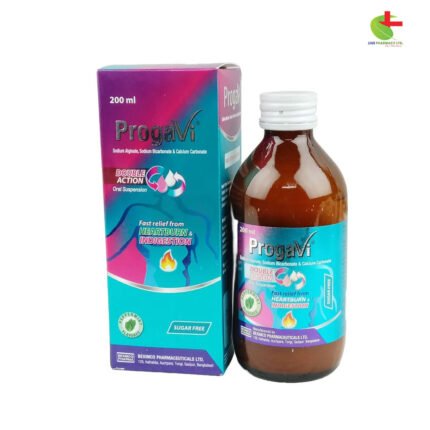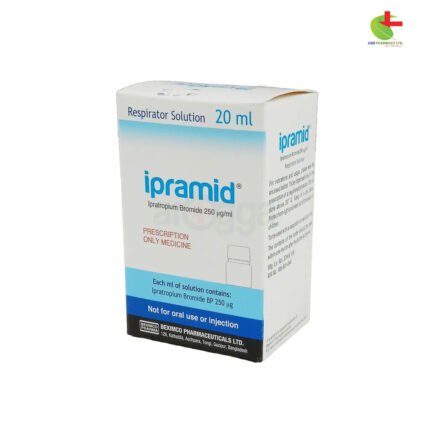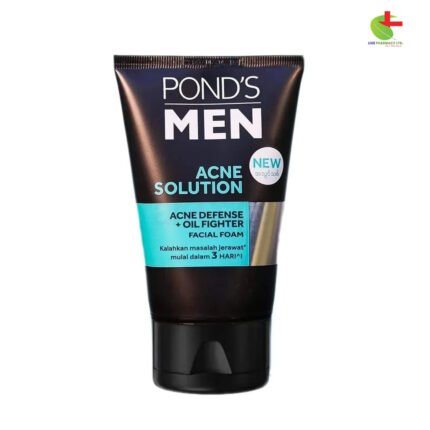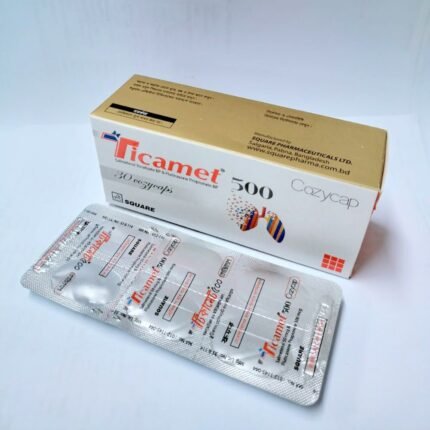Resolve Shampoo
250.00৳ Shampoo
- Resolve Shampoo: Targets and prevents infections caused by Malassezia, treating conditions like dandruff and seborrhoeic dermatitis. Effective for localized pityriasis versicolor.
- Resolve 2% Cream: Treats dermatophyte infections (e.g., athlete’s foot, ringworm) and cutaneous candidiasis. Suitable for various fungal skin infections and seborrhoeic dermatitis.
- Resolve Tablets: Addresses superficial and systemic fungal infections, including oral thrush, vaginal candidiasis, and chronic mucocutaneous candidiasis. Provides maintenance and prophylactic treatment for recurrent infections.
- Resolve Bar: Ideal for general body fungus, with a formulation designed to cleanse and protect affected areas.
 Brand
Brand
|
Beximco Pharmaceuticals Ltd |
|---|---|
 Generics
Generics
|
Ketoconazole |
 Type
Type
|
Shampoo |
Indications
Shampoo: Resolve Shampoo is specifically designed to address and prevent infections caused by the yeast Malassezia (formerly Pityrosporum). It is effective for treating conditions such as localized pityriasis versicolor, seborrhoeic dermatitis, and dandruff (pityriasis capitis).
Cream: Resolve 2% Cream is used topically to combat dermatophyte infections like tinea corporis, tinea cruris (also known as dhobie itch), tinea manus, and tinea pedis (athlete’s foot), caused by Trichophyton, Microsporon, and Epidermophyton species. It is also indicated for cutaneous candidiasis (including vulvitis), candidal intertrigo (sweat rash), tinea (pityriasis) versicolor, and seborrhoeic dermatitis attributed to Malassezia spp.
Tablet: Resolve Tablets are used for treating various types of superficial and deep fungal infections, including:
- Dermatophyte and yeast infections of the skin, hair, and nails (such as dermatophycosis, onychomycosis, perionyxis, pityriasis versicolor, and chronic mucocutaneous candidiasis) when topical treatments are insufficient.
- Oral thrush and gastrointestinal yeast infections.
- Chronic or recurrent vaginal candidiasis that does not respond to topical treatments.
- Systemic fungal infections like candidiasis, paracoccidioidomycosis, histoplasmosis, and coccidioidomycosis.
- Maintenance therapy to prevent recurrence in systemic fungal infections and chronic mucocutaneous candidiasis.
- Prophylactic treatment for individuals with weakened immune systems, including those with cancer, undergoing organ transplants, or suffering from severe burns.
Resolve Bar: Designed to treat all types of body fungus. Apply gently, lather, and leave on for 4-5 minutes before rinsing thoroughly.
Pharmacology
Ketoconazole, the active ingredient, works by inhibiting the enzyme 14-α-sterol demethylase, crucial for converting lanosterol to ergosterol. This inhibition reduces ergosterol levels, compromising fungal cell membrane integrity and increasing permeability. Accumulation of a toxic metabolite and increased membrane fluidity further impair fungal enzyme systems.
Dosage & Administration
Shampoo: Apply Resolve Shampoo to affected areas of the skin or scalp. Leave on for 3-5 minutes before rinsing.
- Pityriasis Versicolor: Use daily for 5 days.
- Seborrhoeic Dermatitis and Pityriasis Capitis: Use twice weekly for 2-4 weeks.
Prophylaxis:
- Pityriasis Versicolor: Use daily for 3 days before summer.
- Seborrhoeic Dermatitis and Pityriasis Capitis: Use every 1-2 weeks.
Cream:
- Tinea Pedis: Apply twice daily for mild infections, generally for 1 week. For severe infections, continue until a few days after symptoms resolve.
- Other Infections: Apply once or twice daily depending on severity. Typical treatment durations are 2-3 weeks for tinea versicolor and 3-4 weeks for tinea corporis. Reassess diagnosis if no improvement after 4 weeks.
Tablet:
- Vaginal Candidiasis: Take 200 mg twice daily for 5 days.
- Other Infections: Take 200 mg once daily until symptoms resolve and cultures are negative.
Treatment Durations:
- Pityriasis Versicolor: 1-6 weeks
- Dermatomycoses: 2-8 weeks
- Onychomycoses: 1-12 months
- Mycoses of Hair and Scalp: 1-2 months
- Chronic Mucocutaneous Candidiasis: 1-12 months
- Oral Mycoses: 5-10 days
- Systemic Candidiasis: 1-2 months
- Other Systemic Mycoses: 1 month to 2 years
Ketoconazole Bar: For body fungus, rub gently to create lather. Leave on for 4-5 minutes before rinsing thoroughly.
Note: Follow your doctor’s advice for all medications.
Interactions
Shampoo and Cream: No specific interactions noted.
Tablet: May reduce absorption with antimuscarinics, antacids, H2-blockers, PPIs, and sucralfate. Plasma levels may be decreased by rifampicin, isoniazid, efavirenz, nevirapine, and phenytoin. May also reduce the efficacy of oral contraceptives and increase serum levels of CYP3A4 substrates like digoxin, oral anticoagulants, sildenafil, and tacrolimus.
Contraindications
Avoid use in patients with known hypersensitivity to ketoconazole.
Side Effects
Shampoo: Generally well tolerated. Possible local burning, itching, or contact dermatitis. Rarely, oily or dry hair may occur.
Cream: Common side effects include burning sensation, erythema, and pruritus. Uncommon effects include bleeding, discomfort, dryness, inflammation, irritation, paraesthesia, bullous eruptions, and rashes.
Tablet: Well tolerated, but occasional nausea, itching, or rare liver reactions may occur.
Pregnancy & Lactation
Shampoo: Safe for use during pregnancy and lactation as it is not absorbed systemically.
Cream: Limited data available; no adverse effects noted from small studies. Reproductive toxicity was observed in animal studies with oral ketoconazole. No known effects on breastfeeding infants.
Tablet: Pregnancy Category C. Should not be used during pregnancy or lactation due to lack of adequate studies.
Precautions & Warnings
Shampoo: Gradually withdraw corticosteroids if used previously to avoid rebound effects. Avoid eye contact; if contact occurs, rinse thoroughly.
Cream: Not for ophthalmic use. Allow a 2-week recovery period before using after potent topical corticosteroids to avoid sensitization.
Tablet: Monitor liver enzyme levels in patients with a history of liver disease. Discontinue if symptoms of liver reaction occur.
Overdose Effects
Shampoo: Unlikely, but if ingested, only supportive care is needed. Avoid emesis or gastric lavage.
Cream: Excessive application may cause erythema, edema, or burning, which will resolve after discontinuation. No special measures needed if ingested.
Therapeutic Class
Anti-fungal agents for subcutaneous and systemic mycoses.
Storage Conditions
Store below 25°C, protected from light and moisture. Keep out of reach of children.













Reviews
There are no reviews yet.